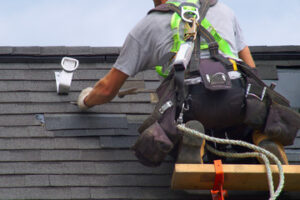Self-adhering shingles for roofs are made to meet industry standards. They are approved by the ENERGY STAR(r) program, which encourages energy-efficient practices. This means they are more environmentally friendly and do not contain volatile organic compounds. They also offer a variety of aesthetic options.
 These products are designed to be applied on flat or sloped roofs. They are available in a variety of colors and finishes. They can be installed in conjunction with other types of Roofing, such as composite shingles. They may also be used in valleys. If you are considering a self-adhering system for your roof, you should consult a professional. You may need to install several additional coatings to ensure the final finish of your roof.
These products are designed to be applied on flat or sloped roofs. They are available in a variety of colors and finishes. They can be installed in conjunction with other types of Roofing, such as composite shingles. They may also be used in valleys. If you are considering a self-adhering system for your roof, you should consult a professional. You may need to install several additional coatings to ensure the final finish of your roof.
When it comes to Roofing, there are a variety of factors that you should consider. These include the type of roofing material you choose, the size and design of the roof, and the quality of the materials you use. Using this knowledge, you can make the best decisions for your home. The question of the day is, which roofing material is best for your home? You have two options if you are in the market for a new roof. Wood and metal. They come in different sizes and styles and have pros and cons. The good news is that you can find the perfect roofing material to complement your home.
The main reason most people go with metal is that it is lightweight and resistant to fire. It also provides a protective coating against UV rays. However, the cost of installing a metal roof can be prohibitively high. Thankfully, some alternatives are cheaper, sexier, and much more durable. A metal shingle is a lot like a wooden one except that it is not subject to weathering and rot. It is a nice-looking product. It is a great way to update your home’s exterior without breaking the bank.
Self-adhering shingles for Roofing are designed to protect the structure of your home. They also help to reduce the cost of your roof repairs, as they provide secondary water protection. The best part is that these systems are easy to install. The underlayment is a crucial element of the roofing system. It provides extra protection for your roof against harsh weather, rain, and snow. It also prevents leaks during heavy rain and snow accumulation.
When choosing an underlayment, you must consider what kind of climate you live in. Some underlayments are better for hot climates than others. In addition, it’s important to remember that certain underlayments are more effective at protecting against ice dams. Asphalt-saturated felt is one type of underlayment. Originally, this was the most common underlayment, but over the past 15 years, synthetic products have taken over. A rubberized underlayment is another option. This underlayment is self-adhering and creates a waterproof barrier over the surface of the roofing deck. It is also perfect for sealing around fasteners. It may contain a polyethylene or polyester film bonded to the weathered surface.
Suppose you’re considering installing a new roof and researching underlayments. You’ll find that many roofing manufacturers offer different types of underlayments to suit your needs. They are a relatively simple and effective way to add a beautiful look to a house. They also help protect against weather. The right underlayment can protect your roof from wind-driven rain, ice, and snow.
This type of roof can be made of many different materials. It is typically used in cold climates. There are several forms of thatch. They can be pitched, domed, vaulted, or flat. Each form requires a certain amount of research and skill to ensure a successful thatching job. The ridge, hip, and valley sections are the most difficult when using thatch for a roof. These three areas require a lot of knowledge and experience to ensure they are not damaged.
The ridge is where most leaks occur. It takes longer to dry out than other parts of the roof. If this part is not compacted properly, it can cause wind damage. It is also important to consider the projecting eaves. This means the designer must consider this when creating a plan.